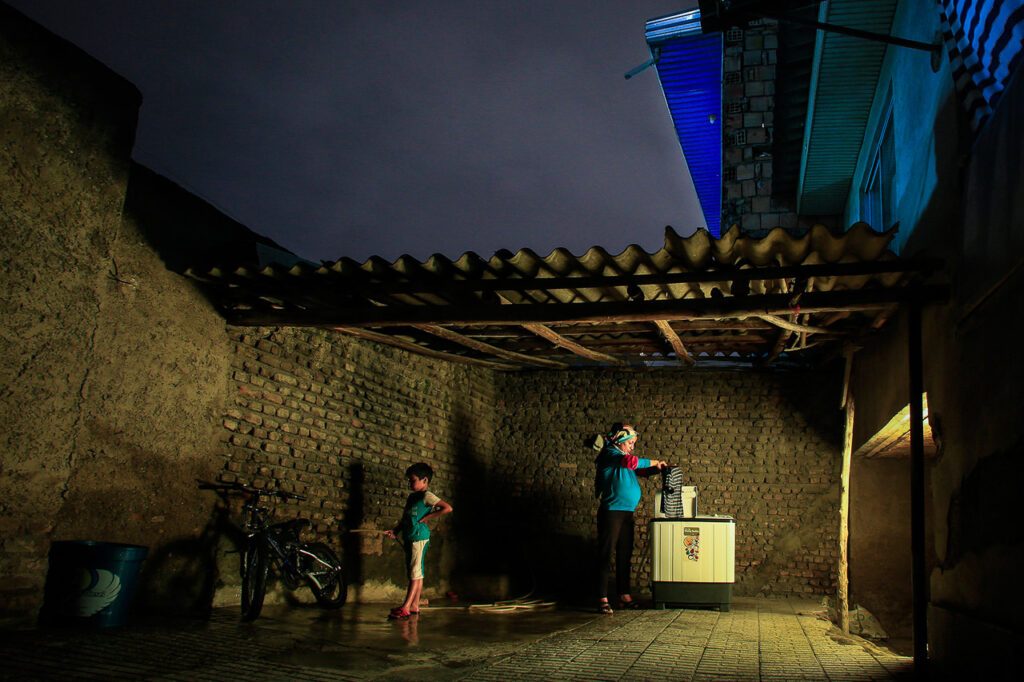
Fotoplatjadaro | Educando la mirada
International photography contest for photographers of all levels.
The creativity and expressive capacity of the projects were especially valued.
A total of €5,250 in prizes, distributed among 5 winning projects.
Among the 296 authors and 353 high-level photographic projects from 38 countries, we present the 5 winners of the “Educating the Eye” 2023 contest, Congratulations!
Jorge Mónaco was born in Buenos Aires, Argentina (1957). Photographer and teacher, he conducts courses, workshops and seminars in various institutions in Argentina and his works are in official and private collections on five continents. He has numerous group and individual exhibitions. He has participated in photography meetings in various countries. He has received the National Endowment for the Arts Grant for research for his essay “The Mennonites.” Since 1995 he has been the director of ENFO, National School of Photography in Buenos Aires, Argentina.
“Dissident Bodies” asks us when one is properly feminine or masculine, and what is the exact measure of femininity or masculinity? Through a set of portraits, Jorge makes visible new gender paradigms that have always existed and are real, even if they are not the focus of attention in our society that is governed by established stereotypes: femininity in women and masculinity in men.
These bodies narrate stories, they are non-normative corporeality, which express themselves, struggle and open the way towards a new modernity, inviting us to reflect on the outdatedness of the heteronormative concept of gender.
Amalia Pérez, Barcelona, Spain. He was born in Buenos Aires, Argentina. She studied dance and has worked as a professional classical dancer for over 14 years. In 2019 she arrived in Barcelona and graduated in photography at the IEFC in 2022 and since then she combines dance with photography professionally. “In photography I found a tool that allowed me to continue creating, opening paths to a new language that no longer involved my body, but allowed me to merge and fall in love with the aesthetic pleasure of the visual.”
In “Fémina”, Amalia explores the timelessness of femininity. And she tells us that it is: “a concept that I used as the tip of an iceberg, which entails a monumental structure submerged under the trivial everyday world and that backbones each and every one of the aspects that make up the woman of the present. How far do the preconceptions we grow up with? What is expected of women, inside and outside the social sphere? Details, such as the specific side of a row of buttons on a shirt, or the cliché of plucking the leaves of a daisy, become culturally normalized standards.
Javier Pedro Fernández was born in Argentina and at one year old, he was transferred to Barakaldo. He currently resides in Urduliz (Bizkaia). Member of the Spanish Confederation of Photography (C.E.F.) and the International Federation of Photographic Art (F.I.A.P.). His passion for photography, where he has taught himself, has led him to travel to the five continents. As an artist, he has accumulated multiple national and international awards.
In “Kazakh Hunters”, Javier shows us a part of the life of the Kazakhs who are a people who live mainly in the province of Bayan-Ölgii, Mongolia. Of them he tells us: “Most Kazakhs in this remote mountainous region depend on domestic animals for their livelihood. On top of that, hunting provides them with an added income for their subsistence. For more than two centuries, Kazakhs have hunted rabbits, groundhogs, foxes, and even wolves, on horseback with trained golden eagles. They are excellent riders and the connection with their eagle is very strong.” Javier tries to capture in images a way of life, that of these Kazakh hunters, which the new generations will no longer continue.
Karina Bikbulatova, Russia, 1995. Karina studied at a film and photography school where she graduated and continued her training as a photographer at the University of Moscow and later in Florence. When the war with Ukraine began, he left Russia and currently lives in Italy. She has been selected in international competitions such as Piero Chiara, Urban Photo Awars, or IPIC, among others.
In “The Two Parallel” Karina shows us “two sisters abandoned by their father, who will never be able to get back together. Simply, because they don’t know the most important thing about each other… They meet once a year in a small village, they communicate, they play, they braid each other’s hair, but they don’t know that they are sisters. Gulshat lives in a poor family, in a small village. Alina lives in the city, studies at a prestigious school and does ballet. Two lives that run in parallel and should never intersect, according to Euclid’s fourth postulate. And yet, this happens, as in the hyperbolic geometry of Nikolai Ivanovich Lobachevsky. In a Russian village, two parallel lines cross once a year.”
Luis Izquierdo-Mosso, Sestao, 1954. After graduating in Philosophy, he began to exhibit painting and work on paper in 1977, later adding photography and all kinds of graphic techniques for the production of images in his work. He has had solo exhibitions in Bilbao, Madrid, Valencia, Girona, Figueres, and numerous group exhibitions. Works in public collections: Artium (Vitoria), Círculo de Bellas Artes (Madrid), Museo de l’Empordà (Figueres), Museo de Bellas Artes (Bilbao).
“Based on real events” is a series of photographs of miniature built spaces and environments. The author explains: “Since 2019 I have taken up photography of miniature scenarios to make the illustrations for the book 20 Tons, Contemporary Art for Tourists (Ed. Lapislatzuli, 2020). The pandemic shutdown increased the pleasant need to photograph places built on the workshop table. Interiors, landscapes, buildings, film sets, painting or photo sets. Any place seen, remembered or dreamed of, sufficiently interesting and reproducible without great difficulty, becomes a photographic motif. Many of the images are based on true events.”